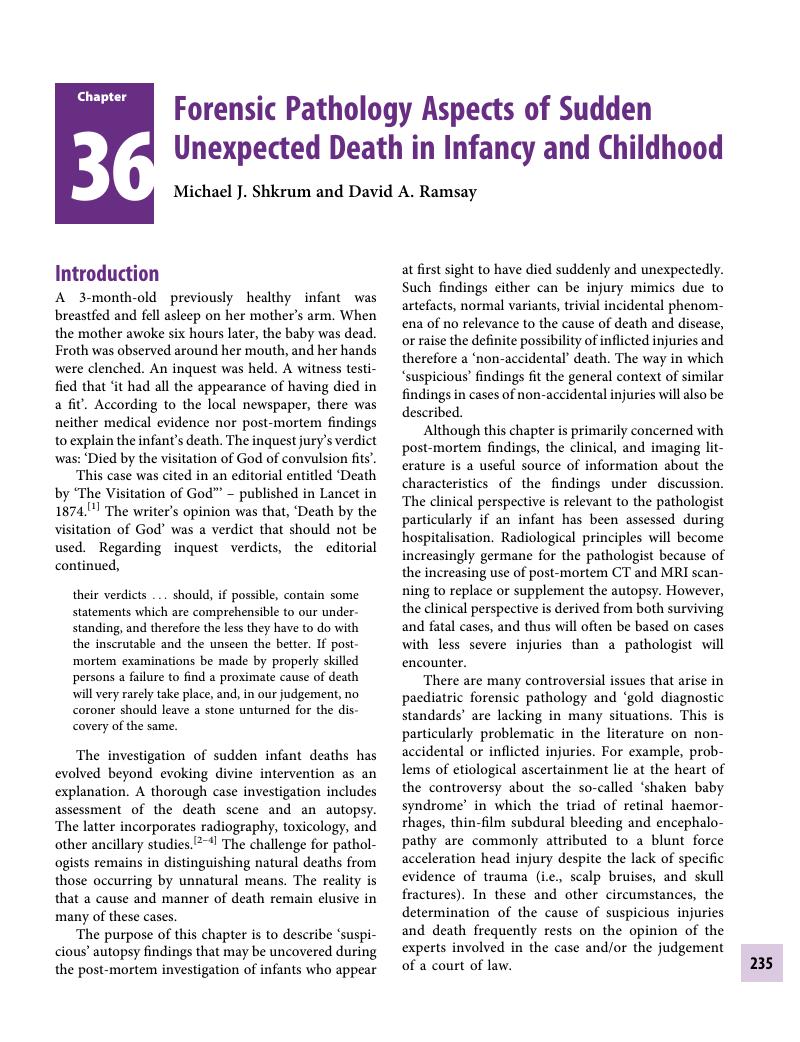Book contents
- Investigation of Sudden Infant Death Syndrome
- Diagnostic Pediatric Pathology
- Investigation of Sudden Infant Death Syndrome
- Copyright page
- Contents
- Contributors
- Foreword
- Preface
- Section 1 The History of SIDS
- Section 2 The Parents
- Section 3 Legal Framework
- Section 4 Best Practices Protocols of Investigation of Sudden Unexpected Death in Infancy and Childhood
- Section 5 Autopsy Findings
- Section 6 Epidemiology and Risk Factors
- Section 7 Pathophysiology
- Section 8 SUDI/SUID Which is Not SIDS
- Chapter 35 Causes of Sudden Unexpected Death in Infancy (Other than SIDS)
- Chapter 36 Forensic Pathology Aspects of Sudden Unexpected Death in Infancy and Childhood
- Index
- References
Chapter 36 - Forensic Pathology Aspects of Sudden Unexpected Death in Infancy and Childhood
from Section 8 - SUDI/SUID Which is Not SIDS
Published online by Cambridge University Press: 04 June 2019
- Investigation of Sudden Infant Death Syndrome
- Diagnostic Pediatric Pathology
- Investigation of Sudden Infant Death Syndrome
- Copyright page
- Contents
- Contributors
- Foreword
- Preface
- Section 1 The History of SIDS
- Section 2 The Parents
- Section 3 Legal Framework
- Section 4 Best Practices Protocols of Investigation of Sudden Unexpected Death in Infancy and Childhood
- Section 5 Autopsy Findings
- Section 6 Epidemiology and Risk Factors
- Section 7 Pathophysiology
- Section 8 SUDI/SUID Which is Not SIDS
- Chapter 35 Causes of Sudden Unexpected Death in Infancy (Other than SIDS)
- Chapter 36 Forensic Pathology Aspects of Sudden Unexpected Death in Infancy and Childhood
- Index
- References
Summary

- Type
- Chapter
- Information
- Investigation of Sudden Infant Death Syndrome , pp. 235 - 265Publisher: Cambridge University PressPrint publication year: 2019

